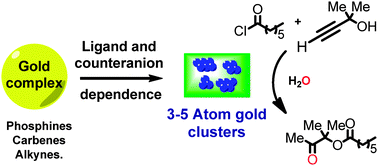Formation and stability of 3–5 atom gold clusters from gold complexes during the catalytic reaction: dependence on ligands and counteranions†
Abstract
Gold complexes and salts decompose to catalytically active 3–5 atom gold clusters during the one-pot acylation–hydration of propargyl alcohols. Kinetic and spectroscopic studies show that released ligands and counteranions exert a direct effect on the formation and stability of the clusters.


 Please wait while we load your content...
Please wait while we load your content...